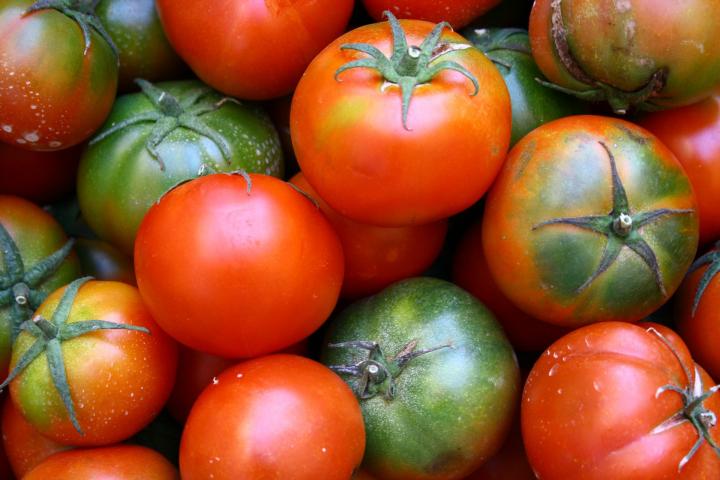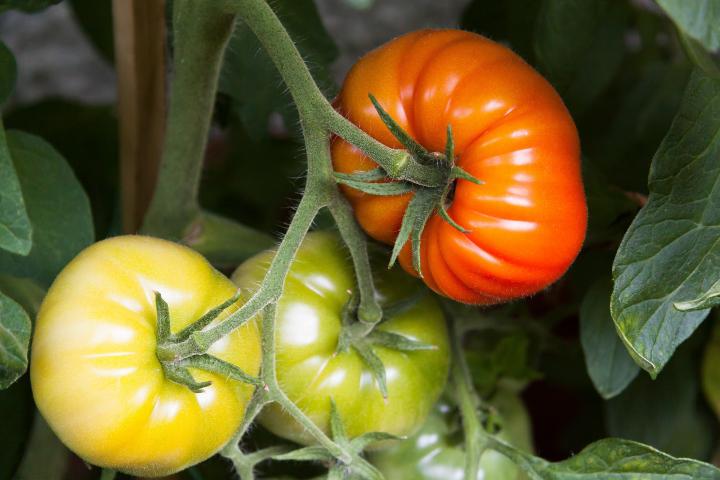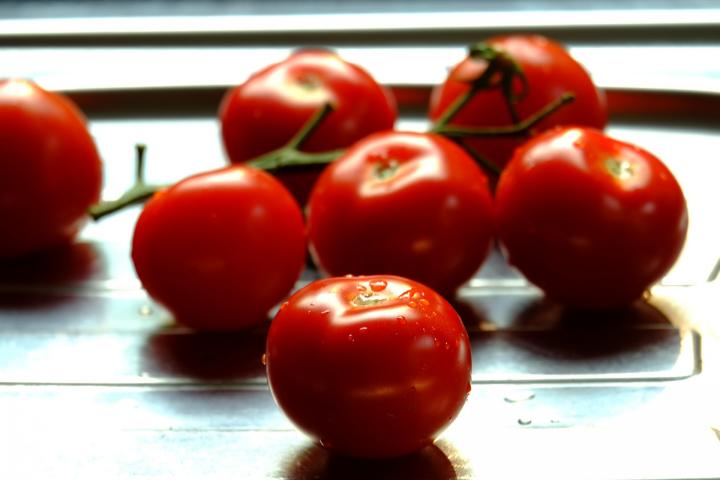






Tomatoes are the ultimate backyard vegetable, and growing tomatoes is easier than you might think. These tips on how to grow tomatoes should help you to take care of your most delicious plants.
There are a multitude of reasons to have a backyard vegetable garden, but for many of us the only reason we garden at all is to raise our own tomatoes. Who can blame us?
Is there anything better than a fully ripe tomato eaten while it’s still warm from the garden? Tomatoes annually rank as North America’s number one home garden crop. No vegetable has received more attention from plant breeders and seed savers, which gives us lots to choose from. After much consideration you probably have narrowed down your choices and even planted your tomatoes. If you haven’t planted them yet, learn how to grow tomatoes from seed and when to plant tomatoes with our post “Tomatoes from Seed the Easy Way.”
Tomatoes have two types of growth: determinate and indeterminate. Determinate plants stop growing at a certain size. They tend to set and produce all their fruit at once over a 2 to 3 week period. Often called bush tomatoes, they can be planted closer together and do well in a container.
An indeterminate plant will keep on growing and producing fruit until it is killed by frost. These plants get quite large and will need some kind of support. Whether you use a trellis, stakes, or cages is up to you, but supporting them is necessary to keep the plants from sprawling on the ground.
For information on even more tomato varieties, look at another blog post, “Tomato Trials.”

Don’t forget to mulch! It helps to conserve moisture and keeps soil-borne disease spores from being splashed up onto the plants. There are many good mulches to choose from—black plastic, straw, shredded leaves, grass clippings, or a thick layer of newspaper. Red plastic has been found to increase fruiting by 12-20%.
To pinch or not to pinch, that is the big question. Most gardeners remove some of the suckers that form between the main stalk and the side branches during the early growth of their plants. But just how much should you prune them, if at all? Pruned plants bear earlier and have larger tomatoes, but they also have fewer of them. Overpruning can cause sunscald—a yellow sunburned patch that eventually blisters. Unpruned plants yield about twice as much fruit as pruned ones do, but it will take longer for the fruit to ripen. You definitely do not want to prune determinate varieties or you will have only three fruit clusters. Since determinates bear fruit only on the ends of their branches, never clip them off or you won’t get any fruit at all!
Pruning also affects flavor. The more foliage a plant has, the more photosynthesis is taking place, which produces more sugars in the fruit. The excess foliage shades the fruit and insulates it from summer heat making it ripen more slowly and improving the taste. Of course, if the foliage on your plants is so thick that no fresh air can reach the center of the plant, then by all means, pinch off a few suckers. If your indeterminates are reaching for the stars, you can top them above the highest blossoms to keep them in bounds and encourage green fruit to ripen.
Tomato plants need 1 to 2 inches of water per week. Uneven watering can set the stage for blossom end rot and may also cause fruits to crack open. Stressed plants remove calcium from the fruit and send it to the shoots to keep the plant growing. Along with uneven moisture, excessive nitrogen and high soil acidity contribute to blossom end rot.
Most gardeners have a secret or two up their sleeves. One man I know treats his plants to crushed eggshells in the planting hole, another uses a handful of bonemeal, and someone else swears by a pinch of Epsom salts. If you must fertilize, side-dress the plants with compost or a dose of liquid seaweed or fish emulsion. Stay away from high nitrogen fertilizers unless your plants have yellow leaves. Too much nitrogen will cause lush growth but give you little or no fruit. If the leaves on your plant are purple, they are calling for more phosphorus. This is the most important nutrient for fruit production.

If all this advice seems, daunting take heart: Tomatoes are really one of the easiest vegetables to grow, and even the worst home-grown tomato tastes better than a store-bought one. For more important facts on planting and growing tomatoes, check out the tomato plant page.
This article was originally published in 2015 and has since been updated.
~ By Robin SweetserGet inspired by Robin Sweetser's backyard gardening tips. Robin has been a contributor to The Old Farmer's Almanac and the All-Seasons Garden Guide for many years. She and her partner Tom have a small greenhouse business and also sell plants, cut flowers, and vegetables at their local Farmer's Market.
Copyright © www.100flowers.win Botanic Garden All Rights Reserved